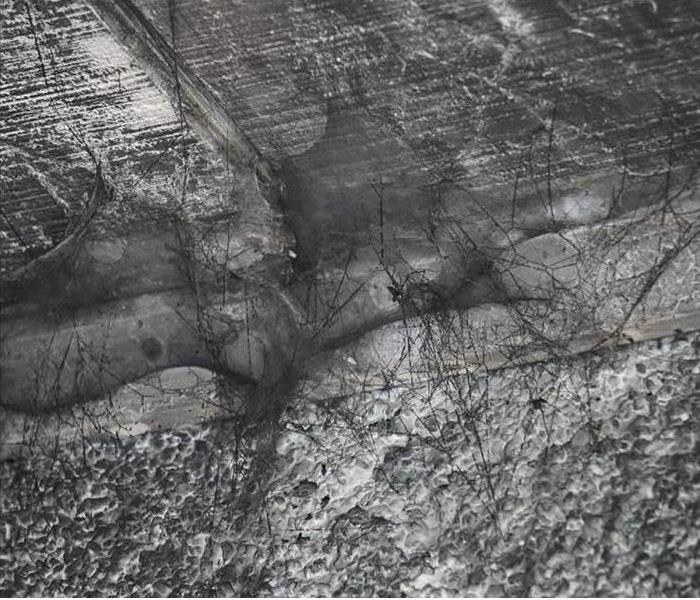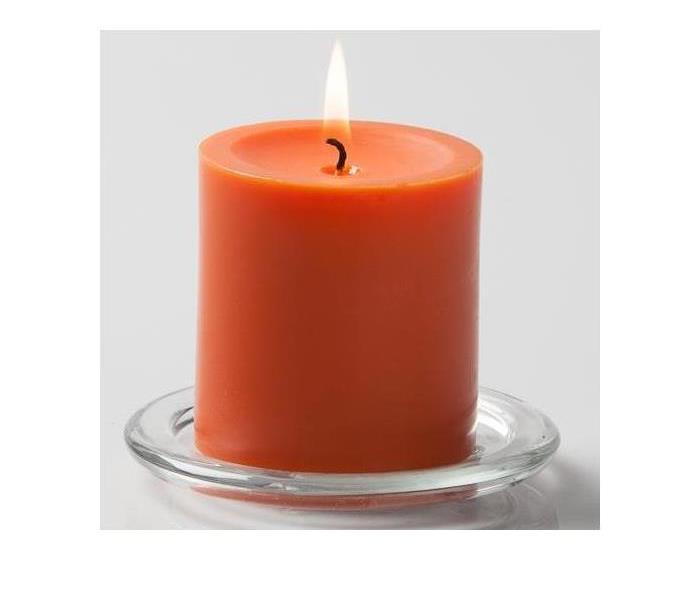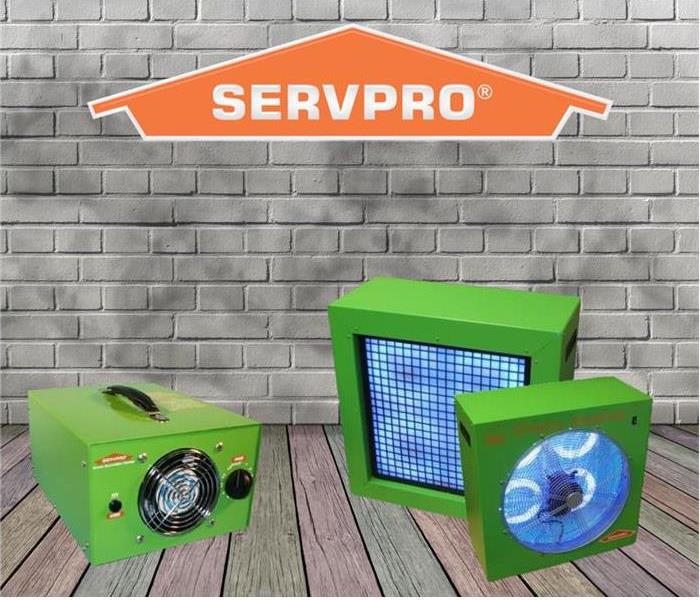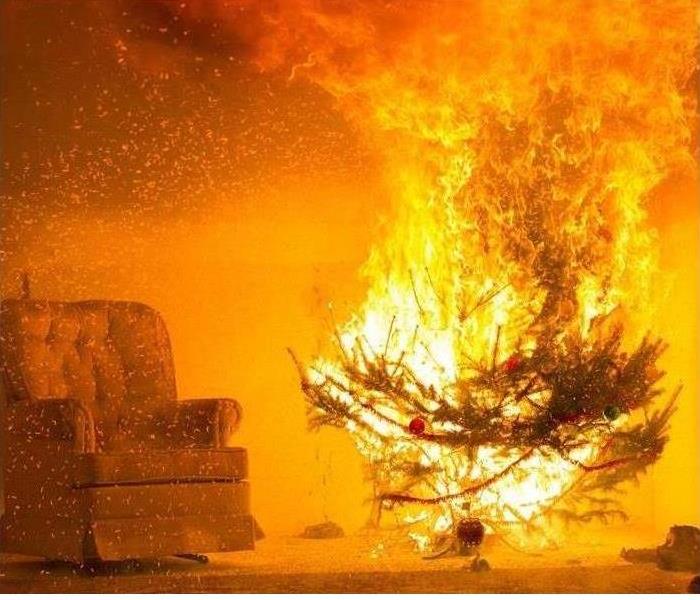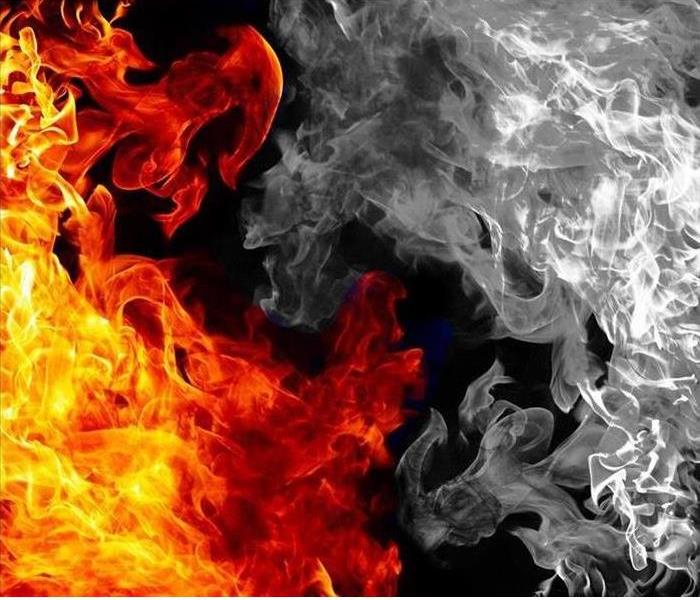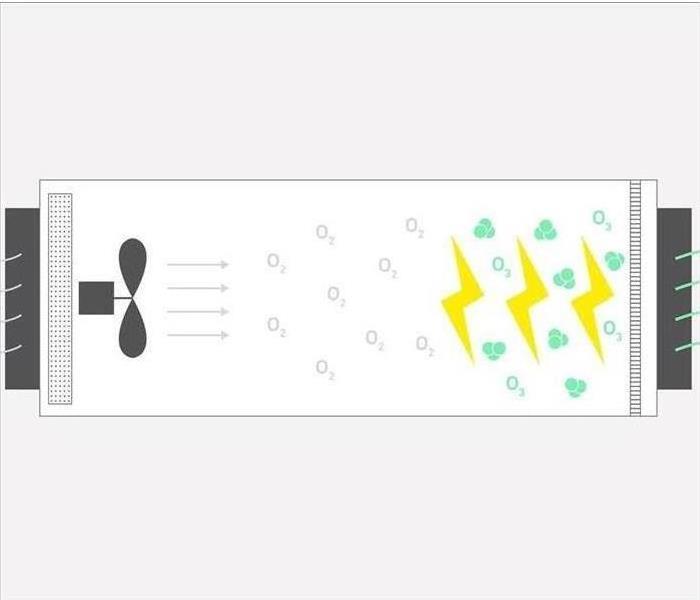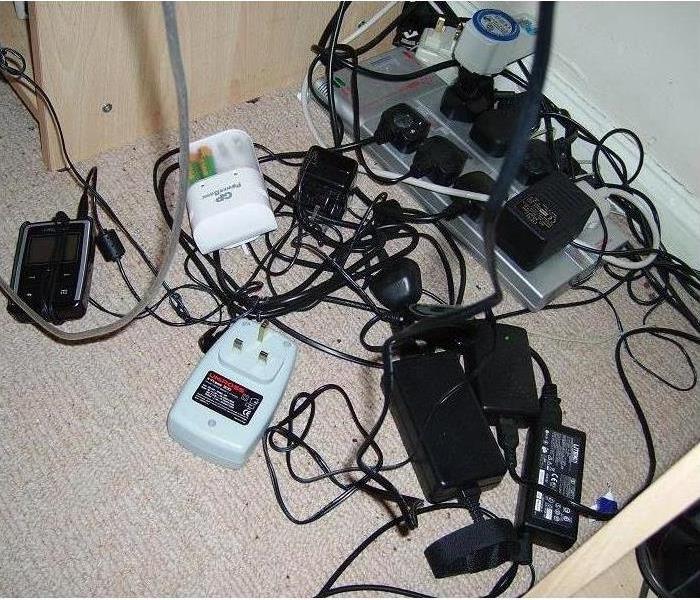Recent Fire Damage Posts
Restoring Peace of Mind: Fire Damage Restoration Solutions in Grand Island, NE
4/1/2024 (Permalink)
Facing fire damage can be overwhelming, but at SERVPRO of Grand Island and Hastings, serving the Grand Island, NE area, we're here to help you navigate the restoration process with confidence.
Facing fire damage can be overwhelming, but our experienced team is here to offer support and guidance every step of the way. We understand the urgency of such situations and respond promptly to minimize further damage and begin the restoration process. Our personalized approach ensures that each restoration plan is tailored to meet the unique needs and preferences of our clients. With specialized equipment and expertise, we restore properties to their pre-fire condition, ensuring safety and peace of mind for our clients.
Trust SERVPRO of Grand Island and Hastings for reliable and efficient fire damage restoration services in Grand Island and Hastings, NE. Contact us today for immediate assistance and peace of mind.
Fire Restoration
3/13/2023 (Permalink)
Fire damage can be devastating to any home or business, causing both physical and emotional turmoil. Whether the fire was small or large, the aftermath can be overwhelming. Fortunately, SERVPRO of Grand Island offers comprehensive fire restoration services to help homeowners and business owners restore their properties after a fire.
SERVPRO of Grand Island's fire restoration process begins with a thorough inspection of the property. This includes assessing the damage caused by the fire as well as any water damage that may have resulted from firefighting efforts. Once the inspection is complete, SERVPRO will develop a comprehensive restoration plan that outlines the steps needed to restore the property to its pre-fire condition.
One of the first steps in the restoration process is removing any standing water and drying out the affected areas. This helps to prevent mold growth and further damage to the property. SERVPRO of Grand Island uses industrial-grade dehumidifiers, air movers, and other specialized equipment to ensure that the drying process is as efficient as possible.
Once the property is dry, SERVPRO of Grand Island will begin the cleaning and restoration process. This includes removing soot, smoke, and other fire-related residues from walls, ceilings, and other surfaces. SERVPRO uses specialized cleaning agents and techniques to ensure that all residue is thoroughly removed, restoring the property to its pre-fire condition.
If necessary, SERVPRO of Grand Island can also provide structural repairs and reconstruction services. This may include repairing damaged walls, ceilings, and floors, as well as replacing damaged electrical and plumbing systems. SERVPRO of Grand Island has the expertise and resources to handle all aspects of fire restoration, no matter how large or small the project may be.
In addition to its fire restoration services, SERVPRO of Grand Island also offers a range of other services to help homeowners and business owners recover from disasters. This includes water damage restoration, mold remediation, and storm damage cleanup. With its 24/7 emergency services, SERVPRO of Grand Island is always available to help in times of need.
Overall, if you're in need of fire restoration services, SERVPRO of Grand Island is the company to call. With its expertise, resources, and commitment to customer satisfaction, SERVPRO of Grand Island can help you restore your property to its pre-fire condition quickly and efficiently. Don't hesitate to reach out to SERVPRO of Grand Island for all of your fire restoration needs.
Minimizing Risk of a Kitchen Fire
3/11/2022 (Permalink)
Most of us are so at home in our kitchens, we hardly take any notice of any potential risk or problems. Besides burning dinner or having the potatoes boil over, we assume we are fine.
But fires happen in kitchens all the time. In fact, well over half of the fires that start in our homes start in the kitchen. Clearly, we need to be more aware. People can get seriously injured, our homes get damaged or destroyed, and people lose their lives.
How to Minimize the Risk of a Kitchen Fire
There are so many easy ways to make sure we are safe while using our kitchens. So many fires are completely preventable.
Check Smoke Detectors
These are supposed to be checked at least semi-annually for the entire household. Change the batteries in all your detectors and check to make sure they are working.
Don’t Leave Cooking Unattended
It only takes a second for something to go wrong when you are cooking. If you need to leave the room, even for a minute, turn the burners off. Elements won’t cool down very fast, so food will continue to cook, and gas stoves will heat right back up again.
We live in an age where we are constantly distracted. Phones and gadgets can all be attention-grabbers. If you use an electronic device for your recipes, shut off email, texts, and other messaging applications so you won’t lose yourself in the banality.
Keep Area Clean
Grease from cooking can build up on the stovetop, above the stove, and on the backsplash. Wipe these down after each use or at the end of the day. Spilled or dropped food items or liquids can start a fire in seconds, whether you are in the room or not.
Remove things like potholders, tea towels, paper towels, cookbooks, aprons, and the like from coming in contact with the flame, the hot pot, or the burner. These can ignite in a flash and they crumble and bits can go everywhere, starting a larger fire.
Remove all packaging right away from the food you open, the wrappers, the grocery bags, and put them in the garbage. Make sure nothing was spilled from them when they were opened.
Wear Appropriate Clothing
Avoid wearing long floppy sleeves with wide wrists, clothing that flows out or can get caught on knobs, handles or pot handles, and tie your hair back. Always use oven mitts or a potholder when touching hot lids or handles. Wear an apron and make sure your feet are covered and comfortable.
Keep Kids Away
Many kids are eager to help out in the kitchen. Give them a task they can safely do and make sure they are seated away from the stove. Always educate them on kitchen safety, heat, knives, appliances, everything.
They can get in and get underfoot, as can the family dog or cat. They are all interested when there is food being prepared. Be aware of where they are to prevent accidents from happening.
Keep a Fire Extinguisher
You should always have a fire extinguisher handy. A small one in the kitchen can save your kitchen and save lives. Baking soda, a lid, and education will help you if you know how to use them, and when.
SERVPRO of Grand Island and Hastings
If you do have a fire in your kitchen, contact SERVPRO of Grand Island and Hastings. We can clean and restore your home as good as new. We have highly trained fire restoration technicians with all the right tools and knowledge.
Kids and Fire Safety
11/6/2021 (Permalink)
As a parent, your kids' safety is likely the number one priority on your list. Therefore, it just makes sense to have a simple escape plan that they can remember so that they can get out of your house in the Grand Island and Hastings area quickly in case of a fire. Here are a few things to teach them to ensure they know the drill.
Teaching Fire Safety to Kids
How To Get Out of the House
The smoke detector is probably the first indication that there is a home fire. When your kids hear this, they must know the steps to take to get to safety:
- Bed roll - Instead of sitting up in bed, roll to their stomachs and use the hand closest to the side to guide them to the floor.
- Floor crawl - Crouch down on hands and knees or on their bellies if smoke and heat are already in the room and crawl toward the escape.
- Test door - Touch door to see if it's still cool and if so, open slowly to see if it's safe to crawl out of the room.
Practice doing these things with your whole family so that everyone can be familiar with what to do in the event of an emergency. Your kids' safety may depend on their ability to get out of the house on their own, and these drills teach them how to do that.
How To Find Each Other After Escaping
You also want your kids to know where to go after they get out of the burning house. Fire restoration experts recommend that include a safe spot where you will meet if you get separated in your fire escape plan. A trusted neighbor's house or a well-lit parking lot of a business down the street are both good options.
Knowing what to do when there's a fire is important for everyone in the family. Protect your kids' safety by teaching and practicing the plan until they are comfortable with it.
Firepits and Safety
10/12/2021 (Permalink)
Now that it’s becoming cooler outside, many of us are uncovering our firepits and looking forward to spending time gathering around them to enjoy time with family and friends. Practicing fire safety is going to be an important thing to remember.
Let’s have a quick refresher on how to safely use your firepit:
Whether you prefer a built-in or portable fire pit, choose one that is not too large for the area. The pit should be a minimum of 10 feet away from any structures or combustible materials as well as away from trees, fences, sheds, power lines, and telephone wires.
Make sure that the seating area is large enough and properly placed for comfort and ventilation.
Don’t start your fire if it’s really windy; a strong breeze can easily blow sparks onto nearby flammable materials, such as firewood piles or roofs, and can hurt people, too.
Burn only dry material. Damp material will create excess smoke.
Don’t use lighter fluid or gasoline to get your fire going as it can easily burn out of control or even result in explosions. Don't burn tires, aerosols, fireworks, or anything containing paint or foam to avoid toxic fumes which could also explode and cause injury.
To start the fire, use a lighter to ignite crumpled pieces of paper covered with small sticks. Then, add larger sticks and a log or two to keep it burning.
Wear non-flammable clothing and hard-soled shoes when starting, sitting near, or extinguishing the fire.
Never leave the fire unattended, and keep pets and children far away from the fire as they will be attracted to it.
Keep the proper fire extinguishing equipment, or at least a water hose, handy in case there is an emergency. You could also fill a bucket with sand, which can be used instead of water to help extinguish a fire.
As the fire dies down, use a shovel and spread out the ashes to allow them to cool down. Then slowly pour water over those ashes and watch them closely to be sure that no burning embers remain or reignite. Put the cooled ashes in a specially designated ash storage metal can.
SERVPRO of Grand Island and Hastings is dedicated to providing the quickest response to any fire event that may occur in our area. Immediate action is crucial to limiting the damage, and we have a trained and experienced team, along with the specialized equipment necessary for prompt recovery and restoring your home or business. Reach our office at 308-535-1115 for any questions regarding smoke or fire damage.
3 Home Fire Safety Tips
10/1/2021 (Permalink)
A home fire occurs every 86 seconds in the United States, according to the National Fire Protection Association (NFPA). These fires result in thousands of deaths and injuries each year, along with billions of dollars in property damage. While the numbers are alarming, some of the harm caused by residential fires is avoidable. A strong home fire safety plan can improve your family's chances of escaping a fire safely and, in some cases, it may help you avoid one altogether. Learn three top ways to practice fire safety in the home from the experts at SERVPRO of Kearney and North Platte.
- Home Fire Prevention
The best way to stay safe from fires is to stop them from occurring in the first place. Start by implementing the fire-prevention measures below:
- Keep flammable materials away from heat sources. If you're using a portable space heater, keep it at least 3 feet away from flammable objects like furniture, blankets, electronics and anything combustible.
- Don't leave flames or smoking materials unattended, including fireplaces, stovetops, candles and cigarettes. Avoid smoking indoors, and never smoke in bed.
- Fix or replace frayed electrical cords or wires.
- Don't overload wall outlets or extension cords.
- Have your furnace or home heating source periodically inspected and kept in good working order.
- Make sure everyone in the household understands the importance of home fire safety and observes fire-safe habits, including your kids.
Get more fire prevention and safety tips from Ready.gov.
- Home Fire Safety Equipment
A good home fire safety plan includes having the right supplies and safety equipment on hand. These tools will be your first line of defense in the event of a fire, and they can dramatically improve your ability to react effectively.
- Install smoke detectors on every floor of your home, in every bedroom, and outside each sleeping area.
- Inspect and maintain your smoke detectors
- A fire extinguisher can keep small, containable fires from growing out of control. Have an extinguisher handy whenever you use cooking or heating equipment.
- Learn how to use a fire extinguisher
- Consider installing an automatic sprinkler system in your home.
- Fire Safety Planning
During an emergency, reaction time is critical. Beyond the equipment you need, everyone in your household should know what to do if a fire starts. Here are some tips to get you started:
- Create a fire safety plan that establishes at least two escape routes and a safe location away from the home where everyone can meet.
- Make an emergency communications plan to stay in contact during and after a fire.
- Practice your escape plan twice a year so everyone can act quickly when it counts.
- Teach children how and when to call 9-1-1.
Halloween Fire and Safety Tips
10/1/2021 (Permalink)
For kids, Halloween is often one of the most anticipated holidays of the year. Dressing up, trick-or-treating, candy, parties, hayrides and corn mazes make for great fun and amazing childhood memories. Unfortunately, Halloween has become a holiday with increasing numbers of home fires.
According to the National Fire Protection Association (NFPA), decorations were the first item ignited in an estimated average of 860 reported home structure fires every Halloween between 2009 and 2013. These fires resulted in an average of 13 million dollars in direct property damage per year. At such a high cost, it’s crucial that you take the necessary steps to help prevent a fire from igniting in your home this season.
To help you enjoy a safer holiday, follow these important Halloween safety tips from the experts at SERVPRO of Kearney and North Platte.
HALLOWEEN SAFETY: DECORATIONS
Use these tips to help prevent your Halloween decorations from catching fire:
Pumpkin Safety
The traditional jack-o-lantern features a smiling or spooky face that’s illuminated from within by a candle. Placing candles inside a cleaned-out pumpkin is a fire hazard. In fact, any lit candle left unattended is a Halloween fire hazard. If they’re inside pumpkins, they can tip over, ignite surrounding materials and cause a fire. To stay safe, use a battery-operated candle or LED light to illuminate your festive pumpkins.
Candle Safety
Using paper bag luminaries or lining a mantle, porch stairs or windowsills with lit candles can create an eerie effect for Halloween night. However, this type of decorating is a fire hazard and poses a risk of injury to you and your guests. To help prevent a fire from decorative candles, replace them with battery-operated, no-flame candles that still provide the same spooky ambiance.
Decoration Safety
Some decorations, both inside and outside of your home, can be dangerous if left near a heat source. Straw, hay bales, corn stalks and other dry materials are flammable. To protect your home from a fire, keep these decorations away from any kind of heat source, including fireplaces, wood-burning stoves, candles and outdoor fire pits.
HALLOWEEN SAFETY: YARD MAINTENANCE
Halloween has the potential to bring plenty of residents through your lawn. To help keep trick-or-treaters and their parents safe, check that your yard is properly maintained and has adequate lighting. Before night falls, complete these tasks:
- Remove large amounts of debris, including leaves or sticks, to help reduce the risk of trips and falls.
- Check that the exterior lights are working properly, including any path lights or Halloween decorations.
- Ensure that steps and railing are secure, if necessary.
By following these tips, you can help keep everyone safe. We hope you have a happy and fun Halloween this year!
Unfortunately, accidents still happen. In the event that a fire broke out in your home, call on the experts at ServiceMaster Restore. We’re available 24/7 every day of the year to get your home back to normal after a disaster. With the proper expertise, tools and innovative equipment, we can restore your home fast. Learn more about our residential fire and smoke damage removal services before the unexpected happens.
How To Recover From Fire Damage
10/1/2021 (Permalink)
A fire can sweep through a commercial building quickly. The sooner the flames are put out, the less damage there will be. However, water is one of the main ways to stop a fire, and water damage can sometimes wreak just as much destruction on a property as the fire itself.
Water damage after a fire can occur from the water hoses firefighters use, as well as the activation of the built-in sprinkler systems inside a commercial building. Find out how your business can recover from both types of water damage after a fire with help from the experts at SERVPRO of Kearney and North Platte.
THE TRUTH ABOUT WATER DAMAGE
Excess water can soak everything inside a building, including equipment, electronics, upholstery, flooring and building materials. The longer water sits, the greater the risk that your building's contents will be permanently damaged or destroyed. Beyond the physical damage water can cause, moisture can also cause mildew and mold growth. If mold has an opportunity to spread in your business, you could face additional damage or restoration costs in the hundreds or thousands of dollars. That's why immediate water extraction after a fire is crucial.
Whenever water damage occurs, take the following steps as soon as possible:
1. DOCUMENT THE DAMAGE
After officials have declared it safe to re-enter the building, document the fire and water damage. Create a list of all items that were damaged or destroyed, and take plenty of photos before attempting any clean-up. Provide your insurance with as many details as possible about your losses so they can properly adjust your claim.
2. CONTACT YOUR INSURANCE COMPANY
Notify your insurance company as soon as possible, and advise your agent about any repairs you intend to make immediately. The agent may advise you to wait for an adjuster to visit your commercial property before you make repairs or begin the clean-up process.
3. REMOVE EXCESS WATER
Open doors and windows to allow plenty of fresh air to circulate and dry your building. If possible, use a sump pump to remove excess water.
4. PREVENT FURTHER DAMAGE
Mold and mildew can begin to grow within one to two days of water damage. To prevent extensive damage to your property, contact a professional water restoration company right away.
WHAT TO EXPECT FROM WATER RESTORATION SERVICES
In order to minimize damage, removing excess water as quickly as possible is of the utmost importance. A professional water restoration company will work to save as much equipment as they can, including saving your business's electronics after water damage. They'll also restore your commercial property back to its former state to help you get back to business.
When you call for water restoration services, you can expect professional technicians to help in the following ways:
- Use specialized equipment to quickly remove all water.
- Thoroughly dry affected areas, including wall cavities, flooring and other building materials.
- Get rid of remaining moisture in the building by dehumidifying affected areas.
- Conduct an expert mold and mildew inspection and provide treatments, if necessary.
- Conduct thorough bacteria inspection and treatment to ensure the building is safe to return to.
- Restore the building and any items that are salvageable.
Dealing with water damage after a fire can be challenging and stressful. When you call in the professionals at SERVPRO of Kearney and North Platte, you won’t have to go through it alone. Our commercial water damage services use state-of-the-art equipment to get your business up and running again. With a commitment to be at your side every step of the way, we'll work with you to develop a comprehensive plan that restores your building and helps you get back to business.
Smoke Webs
3/8/2021 (Permalink)
In the case of a fire, there can be a situation called smoke webbing. Ionization refers to particles of smoke with opposite charges attracting to each other. The formations of these smoke chains are called "smoke webs" as stated previously. These smoke webs look similar cobwebs. They are usually found at room corners and other parts of the home. The presence of smoke webs indicates combustion of synthetic materials, not spiders or cobwebs as some believe. In every fire, some surfaces can be become deeply embedded with soot and smoke odors. Ionization is one of the factors that influences smoke behavior. And understanding these factors help our team of professionals remove any damage appropriately. If you experience a fire in your home or business, you can call on our team of professionals to properly take care of your fire damage, smoke, and soot.
Contents Claim Inventory
3/8/2021 (Permalink)
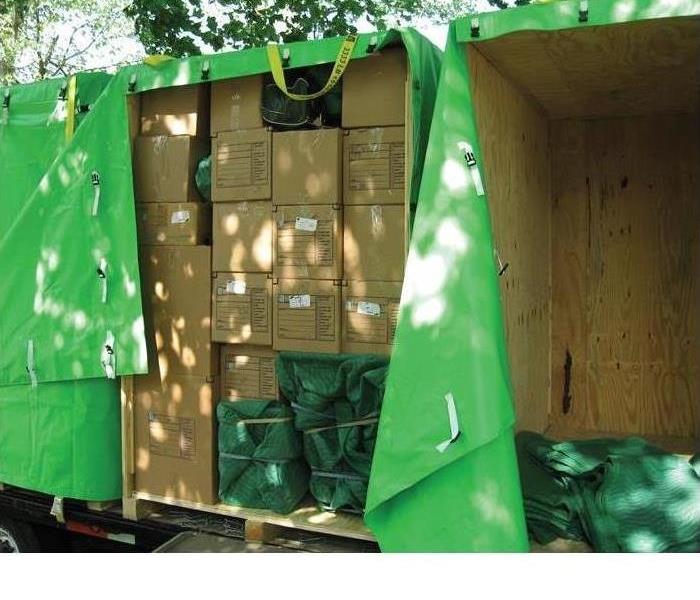 Our professional team can help you get back to normalcy by restoring the salvageable contents. We are HERE TO HELP.
Our professional team can help you get back to normalcy by restoring the salvageable contents. We are HERE TO HELP.
Just imagine experiencing a total loss of your home due to a fire and having to recall every item that was damaged… would you be able to do it? Would you trust yourself to remember each individual item that was in your home, especially the rarely used ones? Without a photographic memory, most of us would struggle with this extensive task in an already stressful time. In the event of a fire, your insurance company will expect you to provide a list of all your personal property that was damaged. By having a pre-assembled Home Contents Inventory you can have piece-of-mind knowing that all of your contents are documented and can then be properly replaced according to your insurance policy. There are several methods to complete your Home Contents Inventory whether on paper or digitally (you can contact your local SERVPRO for a blank copy of either). You will want to make sure to list each item, its value, and include any receipts and photographs along with it. It is a good idea to update your Home Contents Inventory list annually to include any new items you have added to the home and remove items you no longer have. Make sure to keep a copy safe in a fireproof container or safe deposit box and you can always file a copy with your insurance agent as well.
It's Candle Fire Season!
12/7/2020 (Permalink)
Be Cautious When Using Candles
Yes, that soft light and aromatic fragrances that fill the room from a lit candle can be an easy way to create the atmosphere that you want in your home. However, candles can also become a safety hazard if they are not used properly. Candle fires are common, but the following tips can help you avoid them.
1. Don’t Leave Burning Candles Unattended:
It may seem like an annoyance to extinguish a candle every time you leave the room. However, leaving it burning could result in a candle fire if something gets too close to the flame or if it burns too low. It is best to blow out candles before going to bed at night, even if the candle is in the same room you sleep in..
2. Keep Them Away From Flammable Items:
When you are using a candle, you should be sure to have the area free of flammable objects. This can include papers as well as fabrics such as curtains and bedding. These types of items should be at least a foot away from any candles that are in use. Flammable liquids should be kept even further away.
3. Keep Them Out of Reach of Pets and Children:
Both children and pets often come with an excess of energy and curiosity. For this reason, it can be easy for them to inadvertently start a candle fire. Keep burning candles in an area that are not within reach of a child or pet, especially unsupervised!
4. Use an Alternative:
Perhaps the easiest way to prevent a is simply not to use candles at all. There are a variety of other ways that you can achieve a more relaxing home environment. If you are only interested in adding a nice scent to your home, a wax warmer is a great option. One great option is a diffuser. Diffusers are a great alternative to candles and make you house smell fantastic!
While these tips can help you prevent an emergency, accidents can still occur. Whether it is small or large, fires often require smoke cleanup and some repairs. If this happens, a fire damage restoration company like SERVPRO can help return your home to its preloss condition making it "Like it never even happened."
What is Ozone?
12/7/2020 (Permalink)
If you have ever had a fire on your property and had SERVPRO come out to restore, you will know what an ozone generator is. For those who have not, an ozone generator is a machine that charges the air around it creating O3 out of the O2 molecules we breathe.
What We Use Ozone For
The primary function that we use an ozone generator for is the eliminate odors, especially odors caused by fires. We can use this technique of odor removal in many different cases such as, clothing, furniture, and entire rooms no matter the size. While the odor removal works great, there is a downside to using ozone in excess.
Precautions to Ozone
As stated earlier, ozone is different from the air we breathe. This reaction makes O3 poisonous if it is ingested in excess. This is why we close off the area that is being deodorized during the process. You can trust that we take every precaution necessary to keep our customers and employees safe.
Tree Safety
12/7/2020 (Permalink)
The Christmas season is in full swing. During this time each year, the traditional Christmas tree fills the family room surrounded by presents. BE CAREFUL - Christmas tree fires are infrequent, but they can happen. Listed below are a few good measures that will help ensure your home’s safety:
• Make sure you pick a healthy tree; trees with brown needles indicate dryness.
• Make sure your tree is placed in a sturdy stand to prevent it from falling over.
• Make sure your stand has an adequate basin for water.
• Make sure to check and water your tree daily.
• Check your lights to make sure they are fire resistant and supported by a national testing organization.
• Keep your trees a safe distance from any heat source.
• Make sure that the lights and any extension cords used are in good working condition; look for and replace damaged wires.
• Check all the bulbs to make sure they are working properly.
• Make sure you have adequate smoke alarms in the area and they are working properly.
The SERVPRO of Grand Island & Hastings team wants to ensure that everyone has a safe and joyous season. In the unlikely event that a fire were to occur, know that the SERVPRO team has your back!
What to do and what not to do after a fire.
11/10/2020 (Permalink)
What To Do After A Fire
- Limit movement in the home to prevent soot particles from being embedded into upholstery and carpets.
- Keep hands clean so as not to further soil upholstery, walls, and woodwork.
- Place clean towels or old linens on rugs, upholstery, and carpet traffic areas.
- If electricity is off, empty freezer and refrigerator and prop doors open.
- Clean and protect chrome with light coating of petroleum jelly or oil.
- Wash houseplants on both sides of leaves.
- Change the HVAC filter.
- Tape double layers of cheesecloth over air registers.
What NOT To Do After A Fire
- Don't attempt to wash any walls or painted surfaces or shampoo carpet or upholstery without contacting your SERVPRO Franchise Professional.
- Don't attempt to clean any electrical appliances that may have been close to fire, heat or water without consulting an authorized repair service.
- Don't use any canned or packaged food or beverages that may have been stored near the fire, heat or water.
- Don't turn on ceiling fixtures if ceiling is wet. The wiring may be damaged.
- Don't send garments to an ordinary dry cleaner. Improper cleaning may set a smoke odor.
SERVPRO of Grand Island & Hastings specializes in the cleanup and restoration of residential and commercial property after a fire, smoke or water damage event. We can handle any size disaster!
Call us at 308.210.2960
Ozone Deodorizes without Chemicals
11/10/2020 (Permalink)
Activated oxygen machines, otherwise known as ozone machines, work in your home to clean the air of odor. One of the most common uses is for the decimation of smoke odor. These machines work by breaking down the oxygen we breath (O2), and converting it into ozone (O3).
These machines have a wide range of uses and be used in one room of a house or the entire floor of a building. Here at SERVPRO of Grand Island & Hastings, we use them quite often when there has been a fire. The activated oxygen machine allows us to clean a room that smells of smoke without using any chemicals. These little machines are not limited to smoke odor cleaning! They can also be used for pet and food odors!
If you have any odors in your home, call SERVPRO of Grand Island & Hastings to assess the situation. We have the knowledge, tools and track record to effectively remove odors in your home or business.
Call us today at 308.210.2960
Kitchen Fire
10/29/2020 (Permalink)
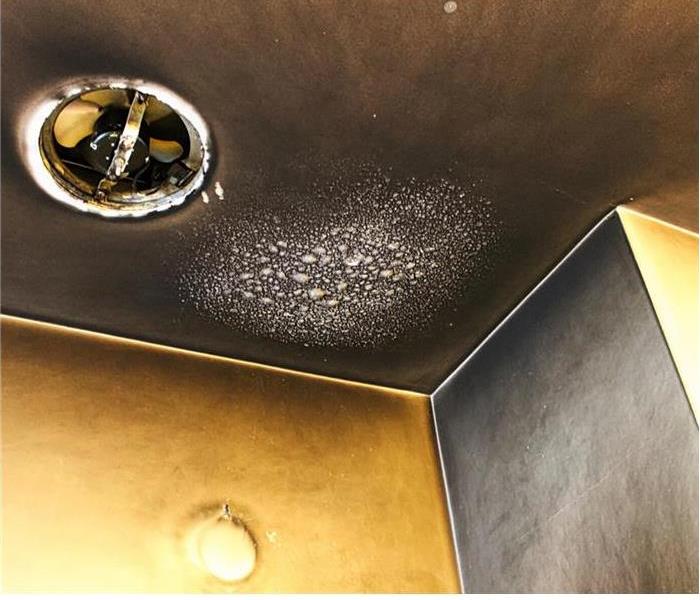 Kitchen Fire
Kitchen Fire
Cooking is something that most every person does on a daily basis. It is an activity that is so normal, that it can be easily forgotten how dangerous it can be. The temperatures required to cook are easily hot enough to start a fire if left unattended.
According to the NFPA, in 2018 the “United States fire departments responded to an estimated average of 172,100 home structure fires per year started by cooking activities in 2012-2016, or an average of 471 home cooking fires per day. These fires caused an average of 530 civilian deaths, 5,270 reported civilian fire injuries, and $1.1 billion in direct property damage per year.”
As you can see, fire damages not only happen often, they are expensive as well. This is because when a fire occurs it damages much more than just the structure of your home or business. The heat from the fire can change the chemical makeup of food items, textiles, furniture, and much more.
Another variable to consider is the amount of soot that the fire spreads across your home. Even a small fire in a small corner of your home or business can spread soot over the entire property. The soot gets into the duct systems and is then cycled through the property by the HVAC system. This is why you should trust our highly trained professionals come in and clean the property properly. At SERVPRO, we have a restore first mindset and will do our best to restore any items affected by fire.
What should be disposed of after a kitchen fire:
- Nonperishable food items - even though these food items are sealed, the heat from the fire can activate bacteria in the cans or jars causing the food to go bad.
- Room temperature perishable food items - a sealed refrigerator can keep food safe to eat for up to two hours without power as long as it is left shut. However, if when the refrigerator is opened, even within that two-hour zone, and a strange odor is present, it would be a good idea to dispose of the items inside.
- Burnt clothing - all clothing burned by the fire should be disposed of even if it is just barely burned.
- Cosmetics and medications - carefully sort through and examine cosmetics and medicine. If there are any signs that the container has been compromised, dispose the item.
A reliable rule of thumb after a kitchen fire is to get rid of items stored in cardboard, thin plastic bags, or cloth.
SERVPRO of Grand Island & Hastings is a team you can count on to be Faster to Any Size Disaster. Call (308) 210-2960 today for a fast disaster cleanup service from an experienced team.
When you need a board-up call SERVPRO.
10/23/2020 (Permalink)
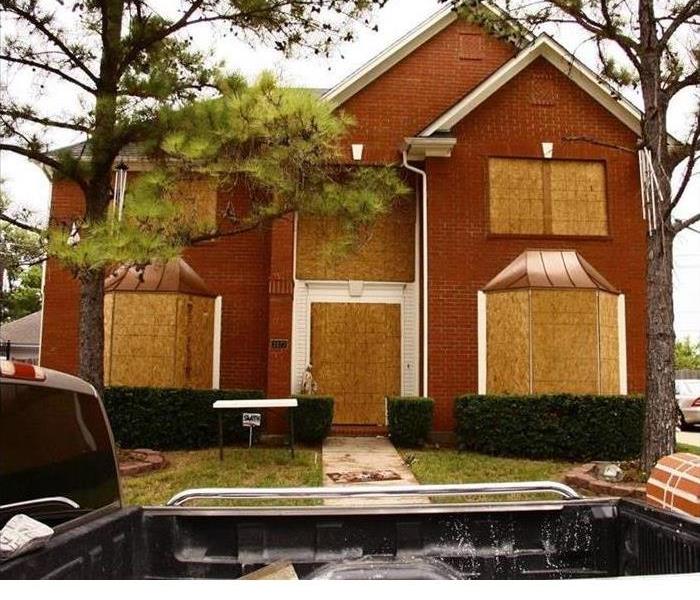 SERVPRO board up
SERVPRO board up
Situations such as vandalism and graffiti can be very upsetting and overwhelming for homeowners and businesses. Vandalism and graffiti can range from relatively minor pranks to malicious destruction of property. Often simple acts of vandalism, like breaking a window, can cause significant water and mold damage if not addressed in a timely manner. Here at SERVPRO, we have the capability to help with this property damage. We can do a board-up which is done after a storm, fire, or vandalism incident where the building is exposed to the elements. It is meant to prevent further damage from happening to the facility. It minimizes property loss by securing the building and taking care if restorable/reusable elements. A natural disaster can leave your facility vulnerable to problems such as vandalism, theft, and unwanted entry.
SERVPRO of Grand Island & Hastings specializes in the cleanup and restoration of residential and commercial property after a fire, smoke or water damage event. We can handle any size disaster!
Call us at 308.210.2960
Clean Your Dryer Vents
3/18/2020 (Permalink)
One of the most common causes of fires is also perhaps the most preventable.
Dryer vents connect from your clothes dryer and can build up lint. If not cleaned out properly, the air cannot flow properly, and a fire can result. This type of fire happens most frequently in homes, posing dangers to adults and children.
According to the U.S. Fire Administration, 2,900 home clothes dryer fires are reported each year. These fires cause an estimated 5 deaths, 100 injuries, and $35 million in property loss. The U.S. Fire Administration also reports that the leading cause of home clothes dryer fires is a failure to clean them (34 percent).
Apart from cleaning your dryer vent, the U.S. Fire Administration has suggestions to enhance safety when using your clothes dryer:
- Don’t use a clothes dryer without a lint filter or with a lint filter that is loose, damaged or clogged.
- Don’t overload the dryer.
- Don’t use a wire screen or cloth to cover the wall damper. They can collect lint and clog the dryer vent.
- Don’t dry anything containing foam, rubber or plastic. An example of an item not to place in a dryer is a bathroom rug with a rubber backing.
- Don’t dry any item for which manufacturers' instructions state “dry away from heat.”
- Don’t dry glass fiber materials (unless manufacturers' instructions allow).
- Don’t dry items that have come into contact with anything flammable like alcohol, cooking oils or gasoline. Dry them outdoors or in a well-ventilated room, away from heat.
- Don’t leave a clothes dryer running if you leave home or when you go to bed.
SERVPRO of Grand Island & Hastings specializes in the cleanup and restoration of residential and commercial property after a fire, smoke or water damage event; as well as mold remediation. We can handle any size disaster!
Call us today at 308.210.2960
Do’s and Don’ts of Extension Cord Use
3/9/2020 (Permalink)
The U.S. Consumer Product Safety Commission (CPSC) estimates that each year, about 4,000 injuries associated with electric extension cords are treated in hospital emergency rooms. About half of the injuries involve fractures, lacerations, contusions or sprains from people tripping over extension cords. CPSC also estimates that about 3,300 residential fires originate in extension cords each year, killing 50 people and injuring about 270 others. The most frequent causes of such fires are short circuits, overloading, damage and/or misuse of extension cords. The Do's and Don'ts of using an extension cord. Do's
- Use extension cords only when necessary and only on a temporary basis.
- Use extension cords that are the correct size or rating for the equipment in use. The diameter of the extension cord should be the same or greater than the cord of the equipment in use.
- Only use cords rated for outdoor use when using a cord outside.
- Keep electrical cords away from areas where they may be pinched and areas where they may pose a tripping or fire hazard (e.g., doorways, walkways, under the carpet, etc.).
- Always inspect the cord prior to use to ensure the insulation is not cut or damaged, exposed conducting wires can put you at risk for fire, burns, and electrical shock. Discard damaged cords, cords that become hot, or cords with exposed wiring.
Don'ts
- Do not use extension cords in place of permanent wiring.
- Never unplug an extension cord by pulling on the cord; pull on the plug.
- Do not remove the prongs of an electrical plug. If plug prongs are missing, loose, or bent, replace the entire plug.
- Do not use an adapter or extension cord to defeat a standard grounding device. (e.g., only place three-prong plugs in three-prong outlets; do not alter them to fit in a two-prong outlet.)
- Do not run cords above ceiling tiles or through walls.
Extended exposure to outdoor conditions can cause cords to deteriorate, so whether they're rated for indoors or outdoors, store all extension cords inside when they’re not in use. Regardless of whether or not it's being used, as long as a power extension cord is plugged into an outlet, it's conducting electricity. To avoid potential safety hazards, always remember to unplug extension cords when they're not in use!
SERVPRO of Grand Island & Hastings specializes in the cleanup and restoration of residential and commercial property after a fire, smoke or water damage event; as well as mold remediation. We can handle any size disaster!
Call us today at 308.210.2960






 24/7 Emergency Service
24/7 Emergency Service